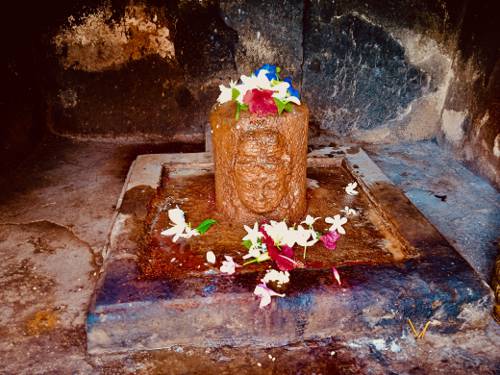
FAQ About Impact of Iconography in Public Monuments

What is iconography in the context of public monuments?
Iconography in public monuments refers to the visual imagery and symbolism used in these structures to convey specific meanings or messages. These symbols can include figures, emblems, motifs, and other artistic elements intended to represent historical events, cultural values, or political ideologies. Understanding the iconography of a monument helps in interpreting the intent and message behind its creation.

How does iconography in public monuments influence societal identity?
Iconography in public monuments plays a significant role in shaping and reflecting societal identity by embodying the values, beliefs, and historical narratives considered important by a community or nation. These symbols serve as reminders of shared history and cultural heritage, reinforcing collective identity and potentially influencing public consciousness and discourse.

Why is historical narrative important in the iconography of public monuments?
Historical narrative in the iconography of public monuments is crucial as it provides insight into the events, figures, or ideologies that shaped a society. By using specific symbols and imagery, monuments can tell stories that highlight important historical moments or celebrate achievements, thereby educating the public and promoting pride and awareness of their historical legacy.

Can the iconography of public monuments change over time?
Yes, the iconography of public monuments can change over time as societal values and historical perspectives evolve. Sometimes, additional elements are added to a monument to reflect new interpretations or significant events. Alternatively, existing iconography might be recontextualized or become the subject of debate, leading communities to rethink their symbolic representations.

What are some common misconceptions about the symbolism in public monuments?
One common misconception is that the symbolism in public monuments is universally accepted or understood the same way by everyone. In reality, interpretations can vary widely based on individual experiences, cultural backgrounds, and historical knowledge. Another misconception is that the iconography is always rooted in historical fact, whereas it may often be based on idealized or politically motivated narratives.

How do public monuments reflect political ideologies through iconography?
Public monuments often reflect political ideologies through their iconography by embodying the values and messages that rulers or governments wish to convey. For example, a monument might glorify national unity, strength, or triumph over adversity through its symbolic elements, thus reinforcing or promoting a particular political narrative. Such monuments can serve both as reminders of power and as tools for political propaganda.

What role do artists and designers play in shaping the iconography of public monuments?
Artists and designers play a crucial role in shaping the iconography of public monuments by selecting symbols, motifs, and styles that best convey the intended message. Their creative choices influence the interpretation and emotional impact of the monument, making the artist's vision an integral part of how the monument communicates with its audience.

How does cultural heritage influence the iconography of public monuments?
Cultural heritage significantly influences the iconography of public monuments, as it provides a rich repository of symbols and motifs that can be used to express shared values and collective history. By drawing on cultural traditions and historical events, monuments can connect the public to their past, reinforcing cultural identity and continuity.

Can iconography in public monuments lead to controversy?
Yes, iconography in public monuments can lead to controversy, especially when the symbols used are interpreted as offensive, exclusionary, or outdated by certain groups. Controversies might arise over the representation of historical figures associated with colonialism, slavery, or other contentious issues. Such debates often prompt discussions about the appropriateness of maintaining, altering, or dismantling these monuments.

What is the impact of removing or altering iconography on public monuments?
Removing or altering iconography on public monuments can have significant cultural and societal impacts. It may address societal calls for change and inclusivity, reflecting contemporary values and diverse historical perspectives. However, it might also lead to debates about erasure of history and the loss of opportunities to engage with complex historical narratives. Each case often requires careful consideration of the monument's historical and cultural significance.

How do public monuments with specific iconography contribute to historical education?
Public monuments with specific iconography contribute to historical education by serving as tangible representations of past events, figures, and ideologies. They act as visual cues that provoke interest and inquiry, encouraging individuals to learn about the historical context and significance behind the icons. This educational aspect helps foster a deeper understanding and appreciation of history in the public sphere.

What are examples of famous public monuments with significant iconography?
Famous examples of public monuments with significant iconography include the Statue of Liberty in the United States, symbolizing freedom and democracy; the Eiffel Tower in France, representing engineering prowess and artistic achievement; and the Monument to the People's Heroes in China, depicting the revolutionary struggles of the Chinese people. Each monument embodies distinct cultural and historical narratives through its iconography.

Can new public monuments still impact cultural identity through iconography?
Yes, new public monuments can still impact cultural identity through iconography by incorporating contemporary symbols and narratives that resonate with present-day values and concerns. As societies evolve, new monuments can reflect current cultural dynamics and identity, serving as modern-day touchstones that encapsulate the spirit of the times.

How do changes in political power affect the iconography of public monuments?
Changes in political power can affect the iconography of public monuments as new regimes may seek to redefine ideological messages, commemorate new heroes, or promote different historical narratives. This often leads to the commissioning of new monuments, alteration of existing ones, or removal of those that no longer align with the current leadership's values and objectives.

Why is it important to preserve the original iconography of historical monuments?
Preserving the original iconography of historical monuments is important as it provides a direct connection to the past, maintaining the integrity of historical narratives and offering educational opportunities. It allows future generations to engage with the complexities of history, even if those narratives are contentious or difficult, fostering dialogue and deeper understanding.

How does iconography affect the public’s emotional response to monuments?
Iconography affects the public's emotional response to monuments by evoking feelings such as pride, nostalgia, reverence, or even anger and discomfort, depending on the symbols and narratives presented. The visual impact of a monument's iconography can forge strong connections between individuals and their heritage, or provoke critical reflection on historical and cultural issues.

What challenges exist in interpreting iconography in public monuments?
Challenges in interpreting iconography in public monuments include differing cultural perspectives, lack of historical context or knowledge among the public, and the evolution of symbolic meanings over time. These factors can lead to varied interpretations, potentially sparking debate over a monument’s intended message and significance.

How does technology affect the way we engage with the iconography of public monuments?
Technology affects the way we engage with the iconography of public monuments by providing digital platforms for virtual tours, augmented reality experiences, and online educational resources. These tools enhance accessibility and interactivity, offering greater insights into the iconographic elements and historical contexts of monuments, and engaging broader audiences in meaningful ways.

What role do public discussions and debates play in relation to the iconography of monuments?
Public discussions and debates play a vital role in relation to the iconography of monuments by fostering dialogue about their meanings, implications, and relevance. These conversations can lead to greater public awareness and understanding of historical and cultural issues, and may influence decisions about the preservation, alteration, or removal of monuments, reflecting society's evolving values and priorities.

How can communities influence the iconography of new public monuments?
Communities can influence the iconography of new public monuments by actively participating in the planning and consultation processes, voicing their perspectives, and advocating for symbols that accurately represent their collective identity and values. This inclusive approach ensures that monuments resonate with contemporary cultural narratives and reflect the diversity and aspirations of the community.
